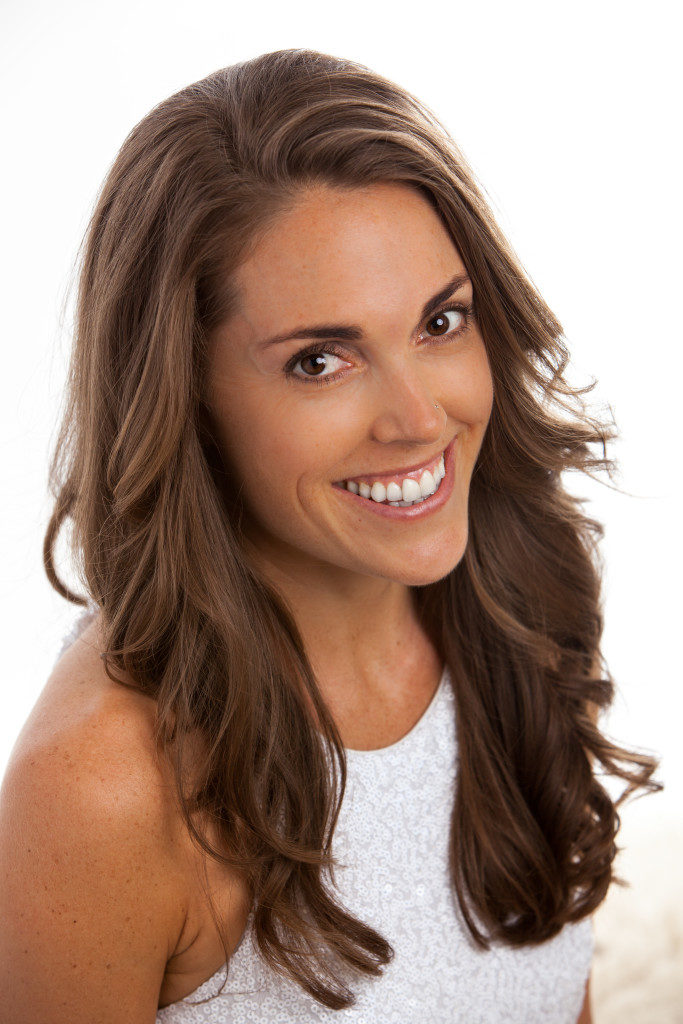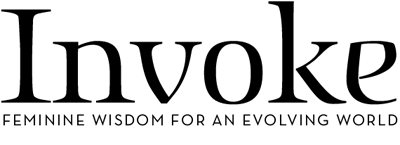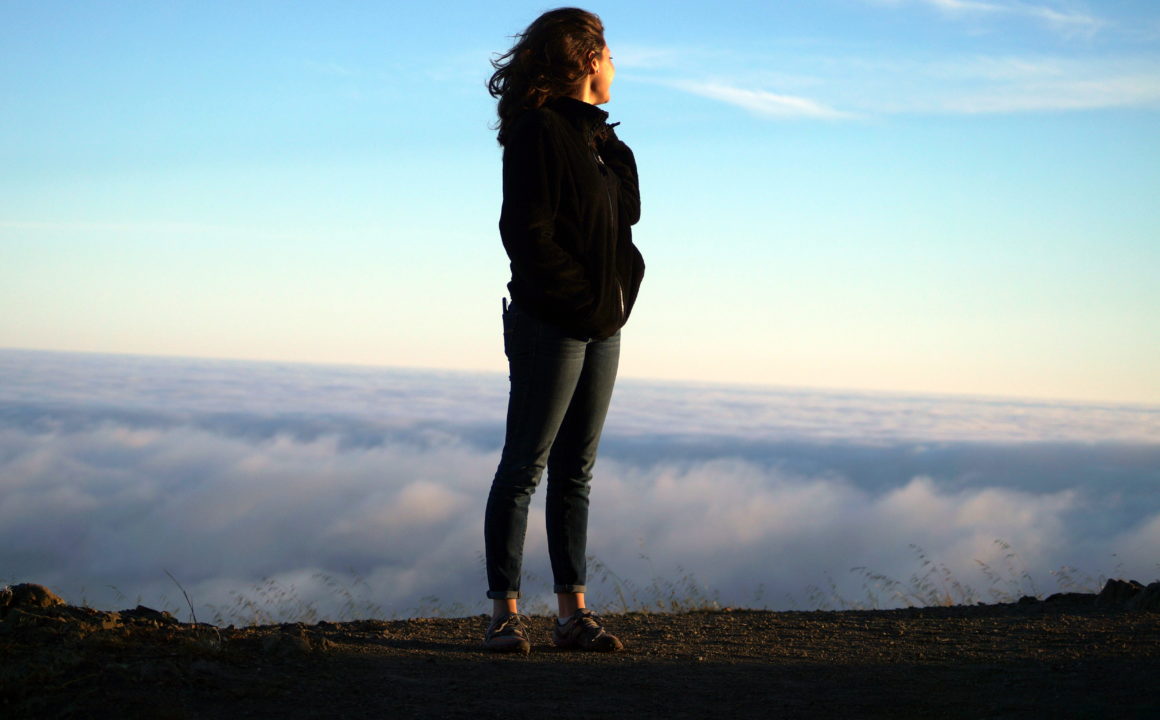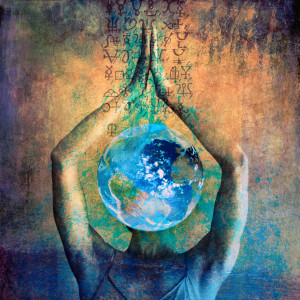I found Sara Avant Stover’s work during a dark time in my life, having just been diagnosed with high-risk HPV (pre-cervical cancer). I had been following her for about a year when I decided that she was the real deal and dove into her online community The Red Tent (now called The SHE School).
A teacher of feminine spirituality and empowerment, Sara is a bestselling author and founder of The Way of the Happy Woman, a space for women to come home to themselves. Her first book, “The Way of the Happy Woman,” was a solid companion for re-orienting my life to embrace more feminine qualities like rest, deep listening, pleasure, and receptivity during my healing in 2012.  Not only did Sara’s teachings deeply nourish me, but I found I really loved being in community, witnessing, and learning with other women. Along with being invited to participate as a mentor in The Red Tent and The SHE School in following years, I jumped into her certification training program and began to teach her work back home in Minnesota. Sara's new book, “The Book of SHE: Your Heroine’s Journey into the Heart of Feminine Power," came out late last year. So I was excited to catch up with her to talk about her updated take on the Hero's Journey, feminine power, and finding your way back home.
Not only did Sara’s teachings deeply nourish me, but I found I really loved being in community, witnessing, and learning with other women. Along with being invited to participate as a mentor in The Red Tent and The SHE School in following years, I jumped into her certification training program and began to teach her work back home in Minnesota. Sara's new book, “The Book of SHE: Your Heroine’s Journey into the Heart of Feminine Power," came out late last year. So I was excited to catch up with her to talk about her updated take on the Hero's Journey, feminine power, and finding your way back home.
I know your inspiration to write this book came from walking your own path and finding that Joseph Campbell’s formulation of the Hero’s Journey didn’t support your experience as a woman. What is missing from the Hero’s Journey that women need?
I have so much respect for Joseph Campbell. He discovered and articulated an invaluable monomyth that spans all cultures and time, helping people to make sense of their lives and tell stories that help us heal.
However, he was teaching in the mid-1900s, when our role as women and our understanding of neurobiology was different than it is now. Back then, it was more amenable for women to be like men; in fact, it was a necessary first step of the feminist movement for women to emulate masculine power in order to be seen as strong and equal before they could step into their own. That’s changing now. We don’t need to be like men in order to feel our power or hold positions of power.
The Hero’s Journey was written for men, based on the masculine, or yang, principle of outer-directed action in the world. He saw that men needed to go out, to slay dragons, to transform, and then bring their awakening home. In fact, back in the 1950s when Campbell was writing, he thought because women were largely working in the home, that they had already arrived at the end of the journey, the homecoming, the place of being. While this may be true at an absolute level for the feminine or yin principle, we’re operating on the relative level most of the time—and here in this relative reality, we know that we are always on a journey home.
So, the missing piece in the Hero’s Journey is an understanding of the difference between the female and male brains and how that affects our journey as women, our Heroine’s Journey. Women are neurologically wired to be more relational—we have bigger emotional centers, and our power is expressed through our ability to feel. We are also deeply governed by our hormonal cycles, which change everything about our lives—our moods, our energy, how we think and look. There is power in these cycles if we align ourselves with them.
 The Heroine’s Journey considers our hormonal cycles and all the ups and downs of our lives—PMS, perimenopause, menopause, divorce, crisis, birth, illness, death—and puts them in the center of our journey where they belong. Every woman knows we are always on our way home. Whether we are conscious or not, we have lots of opportunities to keep coming home to ourselves in different ways in our lives.
The Heroine’s Journey considers our hormonal cycles and all the ups and downs of our lives—PMS, perimenopause, menopause, divorce, crisis, birth, illness, death—and puts them in the center of our journey where they belong. Every woman knows we are always on our way home. Whether we are conscious or not, we have lots of opportunities to keep coming home to ourselves in different ways in our lives.
From my perspective, the Hero and Heroine’s journeys have a lot in common—the five main steps you mention in the Heroine’s Journey seem applicable to the Hero’s Journey, too.
Yes! These are mythic structures. It’s not something we created. These stages exist in the transformative and storytelling process in the world throughout time. In any life experience we’re going to see the architecture of Preparing for the Journey/Departure, The Descent, The Initiation, The Ascent, and The Homecoming.1
What are some of the differences between the two journeys?
The main differences are a reflection of the yang vs. yin principles as they play out on the human plane. I did not try to figure this out but let divine guidance guide me, work it out through me as I considered my life and the lives of the many women I have served.
Juxtaposed to the yang or masculine Hero’s Journey, which focuses on transcendence (supernatural aid, external support, going out to the adventure, slaying dragons), the yin or Heroine’s Journey places greater emphasis on immanence.
The yin orientation is reflected in:
~the deep dive inside: the importance of growing awareness of our own internal, psychological processes as a necessary tool for the whole journey
~the focus on coming fully into the body, embracing our female biological wiring
~the need to move into the darkness, of suffering, and ultimately, of mystery
~the relational approach to being friendly with ourselves, our cycles, and others
~the primary orientation of surrendering (not slaying) in order to receive and come home to who we truly are.
We need to see, understand, and work with the psychological factors that bring us into and keep us in crisis. This includes the feminine archetypes we’ve taken on, the patriarchal striving to be successful that goes hand-in-hand with the devaluation of our feminine feelings and sensitivity, and the confusion around the mother principle that keeps us not knowing how to nurture ourselves skillfully.
Coming fully into our bodies helps us to embrace the deep wisdom our hormonal cycles hold about aligning with their monthly and life rhythms. Awareness of our different biological wiring helps us to accept and work with our sensitivity and understand our psychology and needs.
The descent into darkness relates to both the descent into the body as well as the descent into our secrets and suffering. We understand our suffering, turn toward it, dance with it, and grow because of our willingness to not abandon ourselves. In the darkness, we learn to come into loving relationship with ourselves, which leads us into compassionate relationships with others.
And we practice over and over again dropping into full surrender to the unfolding of love in our lives, whether we recognize it in the moment or not. Through our bodies, through our hearts, through our minds, we open and surrender to life, this surrender being the ultimate feminine strength.
As I consider the detailed steps of the Heroine’s Journey, I wonder if men also need to make this journey to uncover their inner Feminine, and if women might need to walk the Hero’s Journey to bring their inner Masculine more online?
Just as yin is within yang and yang is within yin, the Heroine’s Journey is within the Hero’s Journey and vice versa. They are not separate. While men may not spend as much time going within to understand their innermost feelings, the outer path of the Hero is mirroring their inner world. They are facing their inner life in their outer life journey. The masculine psyche is a part of both men and women. On the level of the psyche, women are also undertaking the Hero’s Journey.
Part of the Heroine’s Journey includes marrying the Divine Masculine. As women we need to know how to move outward, how to use our own agency and will for change, how to use the light of awareness and courage to cut through what is no longer needed. And on the Hero’s Journey, there is great receptivity and surrender required—in being swallowed into the belly of the whale, in opening to supernatural aid, in dying to be reborn. Whatever path you walk, you walk it all the way. Nothing is black and white, either/or, but always both/and.
Do we traverse the Heroine’s Journey always in this order? Do we walk it more than once?
It is labyrinthine. When we walk the labyrinth, we never know where we are. We know we are moving toward the center and that we will get out, but we don’t know how. It is the same for us on our journeys. We have individual labyrinths, like individual fingerprints. We feel far along the journey to the center, then way out again, and then just like the labyrinth, all of the sudden, we are in the middle. …
This unknowing, this chaos, is meant to be part of the medicine we need for the journey. Our psyches, souls, and bodies are always moving toward healing. There will be healing crises to move us toward greater equilibrium. Usually we have a core wound and a core issue surrounding that wound which stays with us for our lives and keeps getting activated and triggered especially through relationships. As we deepen on our path, we are asked to heal this in bigger and bigger ways. The Heroine’s Journey is what we undergo to heal the wounds. They could be wounds from past lives, from generational wounding, from psychological and emotional experiences in childhood, etc. Having a map gives us a way to pinpoint which stage we are in and then see what support we need in order to partner with ourselves through this healing journey.
We need to see that life is benevolent and wants us to be happy, healthy, and whole. These obstacles are not proving us a failure. They are crises/initiations that come because we are truly loved, so that we can heal and awaken. Any moment when life brings us to our knees, we have a choice. Too often, we choose to let an experience destroy us, to stay stuck in grief and resentment the rest of our lives. But if we let life really take us on our Heroine’s Journey, and say YES, this crisis literally becomes the on-ramp to a much more beautiful, richer version of ourselves and our life than we’ve ever known before. But it requires our full participation.
1Author’s note: Campbell originally notes three stages—Departure, Initiation, Return—but Initiation includes what Sara names Descent, and Return includes Sara’s Ascent and Homecoming.
Photos courtesy of Jeffrey Young, Sara Avant Stover, Brooke Cagle, and Allef Vinicius





